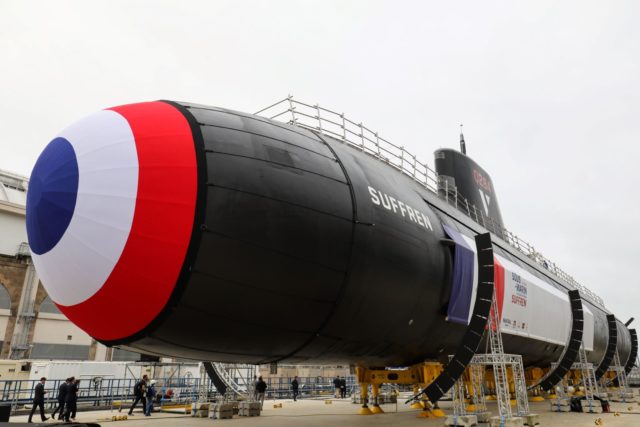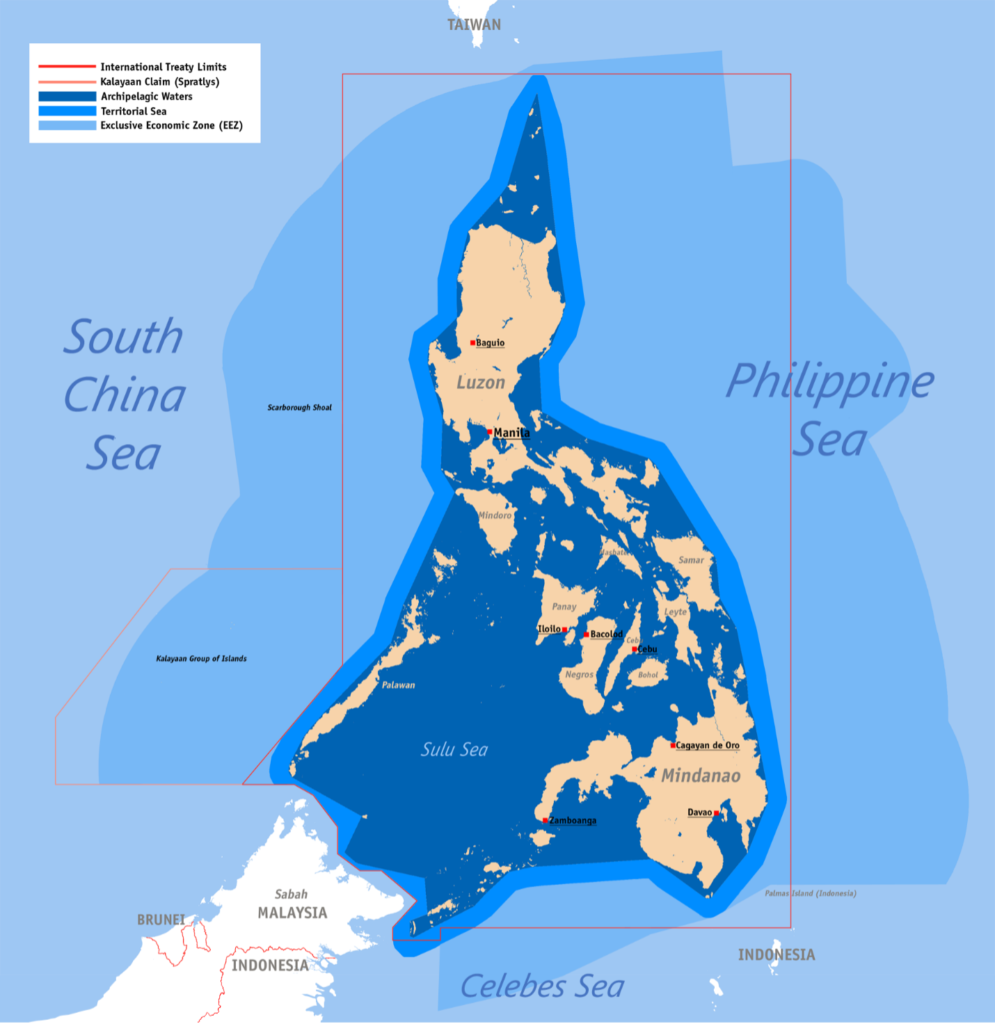
As a result of a new agreement, the UK and the US will help Australia build its own nuclear powered submarines instead of buying the $66 billion French designed 12 Shortfin Barracuda diesel powered submarines. This original French-Australian agreement was signed in 2016 during the Obama administration, beating out Japanese and German competitors. Apparently, the deal was tossed out with the newly announced Australian, US, and UK (AUKUS) pact on 15 September 2021.
Of all the European countries, France has the greatest strategic interest in the Indo-Pacific region. According to the 2019 French Defense Strategy in the Indo-Pacific, more than 1.6 million French citizens reside in the French territories of Mayotte, La Reunion, the French Southern and Antarctic territories, New Caledonia, Wallis & Futuna, and French Polynesia. Furthermore, the French have national territorial rights of 465,422 km² (including Terre Adélie) in the Indian and Pacific Oceans and ~9 million square kilometers of economic exclusive zone (EEZ) in the Indo-Pacific. France has the largest EEZ in the world (11,691,000 km2).
So, how should the West ameliorate the insult done to our first ally from our Revolutionary War (remember Lafayette)? The US and others should help the French sell these submarines or ones that are not export controlled by France to other allies in the Indo-Pacific region such as India, Indonesia, Singapore, the Philippines, and other major sea powers in the Indo-Pacific region. This action would help all concerned about freedom of navigation, free trade, and territorial rights.
Superpowers of the world have the following approximate submarine numbers: #1 China (79), #2 US (68) and #3 Russia (64). North Korea comes in fourth with 62 submarines (plus 20 mini-submarines):
- Ballistic Missile Submarine (SSBNs): 2
- Coastal Submarines (SSCs): 40
- Conventional Submarines (SS): 20
- Mini Submarines (SSMs): 20
France has 11 (SSBNs: 4 and SSNs: 7) and the UK has 14 (SSBNs: 4 and SSNs: 10) submarines respectively. France’s 11 submarines are too few to cover the EEZ around France and its territories. Perhaps, the planned 12 Australian submarines could be built to add to the French fleet of submarines to protect their own interests instead of depending on others?
The UK has the fifth largest EEZ (6,805,586 km2), after France, US, Australia, and Russia. Similarly, the Royal Navy’s 14 submarines do not provide much of a bulwark across its EEZ against the PRC or Russia. 
Map of UK’s EEZ (map creator: B1mbo)
Way down on the list of nations fielding a submarine fleet is Australia with six diesel-electric attack submarines. This fleet is too small to patrol the third largest EEZ (8,505,348 km2) in the world after France and the United States—which is why the Aussies sought a minimum of additional 12 submarines. 
Map of Australia’s and other EEZs
Asian countries threatened by the PRC should greatly invest in sea power—and especially in submarines—to help deter PLA expansionist aspirations. Japan (eighth largest EEZ 4,479,388 square km) and South Korea (54th largest EEZ 475,469 square km) recognize the importance of submarines with fleets of 20 and 22 respectively. Japan and South Korea’s submarine fleets are almost double those of France (largest EEZ) and the UK (fifth largest EEZ) despite having much less area to cover!
India has 16 submarines. Pakistan has eight submarines (5 diesel and 3 mini-submarines). The Indian fleet is composed of the following types:
Ballistic Missile Submarine (SSBNs): 1
Nuclear-Powered attack submarines (SSNs): 1
Diesel-electric attack submarines (SSKs): 14
However, to become a superpower or at least a regional superpower, India should consider that the PRC’s Belt and Road Initiative gives the PRC and its allies access to resupply ports in many places, especially in the Indian and Pacific Oceans. The combined threat from Pakistan and the PRC is significant and if the PRC and Pakistan were to make an effort to cut off shipping to India’s 13 major ports and impair the Indian Navy, the number of potential adversary submarines could pose a major problem.
Indonesia, sixth largest EEZ (6,159,032 square km) has four diesel-electric attack submarines (SSKs)) to cover an island archipelago half the size of the US’s EEZ, and has problems with illegal, unreported, and unregulated (IUU) fishing, especially from China. Indonesia should increase its submarine fleet.
Singapore has four diesel-electric attack submarines (SSKs) and two of them are also air-independent propulsion (AIP) enabled. Singapore serves as a major port along one of the busiest sea lanes in the Straits of Malacca. 
Map of major liquefied natural gas trade flows in the South China Sea

Map of Major Crude Oil Trade in the South China Sea
The above two maps show the liquified natural gas and crude oil flow. The same sea lanes of communication are used for commercial trade showing Singapore’s geographical significance along with Malaysia and Indonesia.
In addition to the four diesel submarines, Singapore ordered two AIP submarines from Germany; they are scheduled to be delivered in 2024. Considering Singapore’s size, regional countries should emulate Singapore’s naval force structure composed of four (six by 2024) submarines and 44 naval ships (mainly corvettes, frigates, patrol and mine warfare ships).
The Philippines do not have any submarines. However, the Philippines has an EEZ (2,263,816 km2) that is almost three times larger than the PRC EEZ (877,019 km2). The Philippines large EEZ is due to the 7,641 islands comprising the Philippine archipelago. Clearly, the Philippines need to fill its submarine gap.
Note: Taiwan cannot sign the United Nations Convention on the
Law of the Sea (UNCLOS) since it is not considered a country.
And what about Taiwan? In 1987 Taiwan procured two diesel submarines from the Netherlands. President George Bush proposed to sell eight diesel submarines to Taiwan; the sale stalled because the US had not built a diesel-powered submarine since the 1950s. The US then sought help from European allies to construct the diesel submarines. The US convinced the Italians to sell refurbished diesel submarines to Taiwan; Taiwan declined this option and decided to design their own submarines. Taiwan built two diesel submarines for a total of four. Taiwan plans to indigenously produce eight new diesel submarines with the first being completed in 2025. Coincidentally, in 2020, the US approved the sale to Taiwan of 18 MK-48 Mod6 Advanced Technology Heavy Weight Torpedoes. These will be integrated into the new submarines. Taiwan, of all countries, should have a robust submarine force to thwart a PLA naval invasion. Taiwan could also consider selling diesel submarines to its friends and allies once it completed its own production needs.
All of the countries mentioned above, except perhaps Singapore, should greatly increase their submarine fleets. European nations including France, Germany, Italy and others could redirect their sales to these sea faring countries to protect their respective territorial waters and their EEZ rights. If the US felt charitable due to the affront it made against France with the AUKUS deal, it could offer an incentive payment supplement to support French sales to these countries. Et voilà—détente restored between the US and France.




